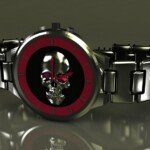Excellent engine: Accuracy and efficiency of CNC wheel machining
In the high-performance automotive and aerospace world, wheels are more than just circular components. They are key structural elements that directly affect safety, processing, aesthetics and overall vehicle dynamics. Achieving the perfect balance of lightweight strength, perfect balance and striking design requires a manufacturing process that operates in a pinnacle of precision and efficiency. This is essential for CNC (Computer Numerical Control) wheel machining, especially the function of utilizing the five-axis technology.
In addition to casting and forging: CNC advantages
While casting and forging creates the initial wheeled form, ultimately complex details, precise mating surfaces (such as hub holes and bolt patterns), required lightness (through pockets and speeches), and perfect aerodynamic features require minus machining. Traditional processing methods are consistent in dealing with complex geometries and effectively deal with complex geometries.
Enter CNC machining. By converting digital design (CAD models) into precise tool paths controlled by complex software, CNC brings unparalleled precision and repeatability to wheel manufacturing. Each cut, hole, profile and finish are performed with meticulous controls to ensure that each wheel meets the exact specifications after batches.
Why the five-axis CNC is the game changer for wheels
Despite the powerful three-axis CNC, five-axis machining represents a quantum leap in complex parts like wheels. Why:
- Multi-directional processing is carried out simultaneously: A five-axis CNC machine can move the cutting tool along five different axes (x, y, z linear + a and b rotation) at the same time. This allows the tool to approach the artifact from almost any angle in a single setup.
- Complex geometric shapes make it easy: Wheel designs usually have deep pockets, complex spoke shapes, complex curvature and undercuts. Five-axis machines excel at accessing these challenging areas without repositioning steps, thus maintaining critical dimensional relationships.
- Unrivaled accuracy and surface surface: By minimizing the settings, the five-axis machining greatly reduces the inherent cumulative error dose of moving parts between multiple fixtures. This translates into tighter tolerances (usually micron-scale), upper surface finish and perfect geometric relationships (e.g., concentricity between hub holes and rims).
- Significantly reduce delivery time: Complicated functions in a single setup eliminate the time it takes to reposition, retune, and recalibrate the workpiece. This turbocharged production throughput.
- Material Optimized and Lightweight: The five-axis feature allows designers to push the envelope using aggressive but structurally lightweight but light-sounding strategies (complex spokes and pocket engravings) that are impossible or too expensive to machining, otherwise, maximizing material removal only if necessary.
Engineering accuracy: the core of safety and performance
For wheels, precision is not a luxury. This is a crucial priority:
- Hub Hole and Bolt Mode Accuracy: The low-light frontal machining of hub and lug holes ensures perfect centering and uniform load distribution during installation. Any deviation can cause vibration (wheel tremor), resulting in accelerated wear and potential failure.
- Beat and balance: Precise machining minimizes radial and axial jumps, "shake" Measured during rotation. This is the basis for achieving smooth operation and eliminating vibration at high speeds.
- Structural integrity: Precise control of wall thickness and critical stress points ensures that the wheel maintains its structural strength under dynamic loads and influences.
- Sealing surface: Perfect machining of bead seats and stem holes is essential for keeping a seal with a tire.
Unlock peak efficiency
Five-axis CNC machining has significant efficiency growth throughout the wheel manufacturing life cycle:
- Benefits of a single setup: As emphasized, eliminating multiple settings saves huge time, labor costs and fixed costs.
- Reduced waste rate: Higher accuracy and repeatability directly translate into parts discarded due to machining errors.
- Faster prototypes and iterations: Complex design changes can be quickly programmed and processed, thereby accelerating new product development and customization cycles.
- Automation integration: Modern five-axis CNC centers seamlessly integrate with automation systems (robot loading/unloading, pallet changers) for efficient lighting manufacturing.
- Scalability: CNC programming allows for quick replication; once the program is perfect, producing the same wheels in large capacity will become efficient.
The power of materials and customization
CNC wheel machining, especially five axles, handles a variety of high-performance materials that are critical to the wheels:
- Aluminum alloys (e.g. A356, 6061, 7075): Popular for its strength to weight ratio and corrosion resistance. Widely used in performance and alloy wheels.
- Magnesium alloy: Very lightweight and often seen in high-end racing applications.
- Titanium alloy: The final intensity and lightness are used in niche aerospace and motorsports, although more expensive.
- Steel alloy: For heavy-duty applications requiring maximum strength (e.g., trucks, industrial equipment).
This material versatility combined with the geometric freedom of five-axis machining opens the door to truly unlimited customization. Whether the client requires a unique speech design for aesthetic distinction, custom offset and width of a specific vehicle assembly, or a specialized lightweight for racing, Advanced CNC is a favorable technology.
GRESTLIGHT: Your Excellent Partner in Precision CNC Wheel Processing
exist Greatwe understand the key accuracy and performance requirements for modern wheels. As a professional five-axis CNC machining manufacturer, we are committed to becoming your solution partner.
- Advanced five-axis functions: We invest in state-of-the-art five-axis CNC machining centers with cutting-edge control systems and highly rigid precision and the ability to cope with the most complex wheel designs.
- Engineering expertise: Our team has deep knowledge in machining high-performance wheel materials and optimization processes for improved accuracy and efficiency. We focus on the manufacturing nature of the design stage.
- End-to-end service: In addition to main processing, Grembligh also provides a comprehensive One-stop post-processing and completion service. This includes from fine cleaning and burrs to precision heat treatment (if needed), surface finishes (painting, powder coating, professional anodization), laser etching and final quality assurance. We manage the entire process and simplify your supply chain.
- Quick customization and prototype: Need a unique wheel design or a quick prototype? Our advanced systems and effective workflows enable us to respond quickly to custom requests and are much faster than the industry average.
- Material mastery and competitive value: We have skillfully processed the most common and exotic wheel materials. Leveraging our efficiency and lean manufacturing principles, we offer these features at a highly competitive price without sacrificing quality.
When the quality, accuracy and on-time delivery of critical wheel components are critical, Greglight five-axis CNC machining is the best choice. We are committed to delivering parts that not only meet but exceed your specifications. Customize precision wheels now at the best prices!
in conclusion
The relentless pursuit of lighter, stronger, safer and more tactile wheels fundamentally shifted the industry to advanced CNC machining. In particular, the five-axis CNC technology is a catalyst that achieves unprecedented accuracy in key areas such as hub holes and structural geometry while simultaneously driving excellent efficiency through a single setting of machining and simplified production. This fusion of accuracy and productivity unlocks true design freedom and material potential. For manufacturers demanding reliability, performance and customization on wheels, working with experts at Greatlight, equipped with cutting-edge five-axis capabilities and a commitment to end-to-end excellence is more than just an advantage – it is a strategic necessity to succeed in today’s demanding markets. Transform your wheel design from concept to reality by designing for perfect technology.
FAQ: CNC wheel machining
1. If the wheels are cast or forged, why are CNC machining required?
When casting/forging produces basic shapes, CNC machining is critical to achieving the final critical dimension, surface finish and complex details. It precisely machine is hub holes, bolt patterns, stem holes, bead seats and complex spoke profiles, ensuring safety-critical features such as perfect balance, wheel center and structural integrity that can be met with exact specifications by individual casting/forging.
2. What advantages does five-axis CNC provide over three-axis machining?
The main advantage of five-axis machining is complex partial completion A setting. It allows movement along more axes simultaneously, allowing the tool to:
- Easily access deep pockets and complex undercuts.
- Achieve superior surface surfaces and tighter tolerances by maintaining optimal tooling to partial angles.
- A complex 3D profile of a machine in a single operation.
- Compared with multiple three-axis settings, production time and setup costs are greatly reduced. This translates directly into higher accuracy and significant efficiency improvements in complex wheel geometries.
3. What tolerances can CNC wheel processing achieve?
The famous five-axis CNC shops (such as Greatlight) usually achieve extremely tight tolerances, usually in +/- 0.013mm to +/- 0.025mm (0.0005 to 0.001 inches) Or better on key features such as hub hole diameter, bolt circle diameter (BCD) and jump specifications. Depending on the material, function and process control, there may be stricter tolerances.
4. Which materials are best for CNC machining wheels?
The most common and reasonable materials include:
- Aluminum alloy (A356, 6061, 7075): Good balance of strength, weight, corrosion resistance and processability.
- Magnesium alloy: Ultra-lightweight, perfect for high-performance racing cars (requires specific safety considerations).
- Titanium alloy: Excellent strength weight and high temperature performance (higher cost).
- Steel alloy: For heavy-duty applications, maximum strength is required (consumer lightweight wheels are less common). Choice depends on performance requirements, application and budget.
5. How long does it usually take to process a set of custom wheels?
Delivery times vary widely depending on the design, materials, wheel size, required finishes and store capacity complexity. However, leverage effective five-axis machining and simplified post-processing:
- prototype: It can usually be generated internally 1-2 weeks.
- Custom small batches: May accept 2-4 weeks.
- Larger production operation: Delivery time is more efficient per unit (e.g. Weeks of a week). The key advantage of premium CNC stores such as Greatlime is their focus Quick customization Optimized workflows to minimize lead time compared to industry averages.
6. Can CNC machining make my wheels lighter than ready-made options?
Absolutely. One of the main benefits of five-axis CNC is its ability to have complexity Lightweight. By precisely machining the spoke design of the composite, the internal pockets and sparse structural parts only allow for analysis (without damaging strength), CNCs can achieve significant weight savings compared to simpler mass, thicker geometry.
7.
Yes, we specialize in a complete one-stop solution. GREMPHILE provides a comprehensive Post-processing and completion of services internal. This includes key steps such as precision cleaning, burrs, heat treatment (if alloy/pretreatment is required), surface finishing (sand powder, polishing, paint, paint, powder coating, specialized anodization for aluminum), laser etching, strict final inspection and balance (if required). This ensures consistency, quality control and convenience from initial machining to final inspection.

















